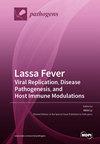Genomics Insights into Mycolicibacterium Hassiacum Causing Infection in a Cat with Pyogranulomatous Dermatitis and Panniculitis
IF 3.3
3区 医学
Q2 MICROBIOLOGY
引用次数: 0
Abstract
Mycolicibacterium hassiacum (homotypic synonym: Mycobacterium hassiacum) represents an ungrouped thermotolerant rapidly growing mycobacteria (RGM) species occasionally associated with infections and disease in humans. In this report, we describe a case of pyogranulomatous dermatitis and panniculitis due to M. hassiacum in an immunocompetent adult cat. To the best of our knowledge, this represents the first report of M. hassiacum infection in animals. We also report the results of the in-depth genome characterization of the isolate using a combined short- and long-read whole-genome sequencing (WGS) approach. We observed the lack of acquired-resistance genes and no evidence of mutations in housekeeping genes associated with resistance to rifampicin and isoniazid. We detected some virulence factors in our isolate, such as some associated with the interaction of mycobacteria with host cells, and the presence of multiple copies of heavy metal resistance genes (arsB, arsR, and arsL/cadL). In conclusion, M. hassiacum should be included among the RGM species associated with feline subcutaneous atypical mycobacteriosis (SAM). A reliable and fast RGM laboratory identification and characterization is important not only for an accurate etiological diagnosis but also for a correct approach to SAM treatment options.从基因组学角度揭示引起猫脓疱性皮炎和泛发性皮炎的哈氏分枝杆菌感染的原因
哈西分枝杆菌(Mycolicibacterium hassiacum,同型异名:Mycobacterium hassiacum)是一种未分群的耐热快速生长分枝杆菌(RGM),偶尔与人类的感染和疾病相关。在本报告中,我们描述了一例免疫功能正常的成年猫因哈氏分枝杆菌引起的化脓性皮炎和泛发性皮炎。据我们所知,这是第一例动物感染 M. hassiacum 的报告。我们还报告了采用长短线程全基因组测序(WGS)方法对该分离株进行深入基因组鉴定的结果。我们观察到缺乏获得性抗性基因,也没有证据表明与利福平和异烟肼抗性相关的管家基因发生了突变。我们在分离株中检测到了一些毒力因子,如一些与分枝杆菌与宿主细胞相互作用有关的因子,以及存在多个重金属抗性基因拷贝(arsB、arsR 和 arsL/cadL)。总之,与猫皮下非典型分枝杆菌病(SAM)相关的 RGM 物种中应包括 M. hassiacum。可靠、快速的 RGM 实验室鉴定和特征描述不仅对准确的病原学诊断很重要,而且对正确的 SAM 治疗方案也很重要。
本文章由计算机程序翻译,如有差异,请以英文原文为准。
求助全文
约1分钟内获得全文
求助全文
来源期刊

Pathogens
Medicine-Immunology and Allergy
CiteScore
6.40
自引率
8.10%
发文量
1285
审稿时长
17.75 days
期刊介绍:
Pathogens (ISSN 2076-0817) publishes reviews, regular research papers and short notes on all aspects of pathogens and pathogen-host interactions. There is no restriction on the length of the papers. Our aim is to encourage scientists to publish their experimental and theoretical research in as much detail as possible. Full experimental and/or methodical details must be provided for research articles.
文献相关原料
| 公司名称 | 产品信息 | 采购帮参考价格 |
|---|
 求助内容:
求助内容: 应助结果提醒方式:
应助结果提醒方式:


